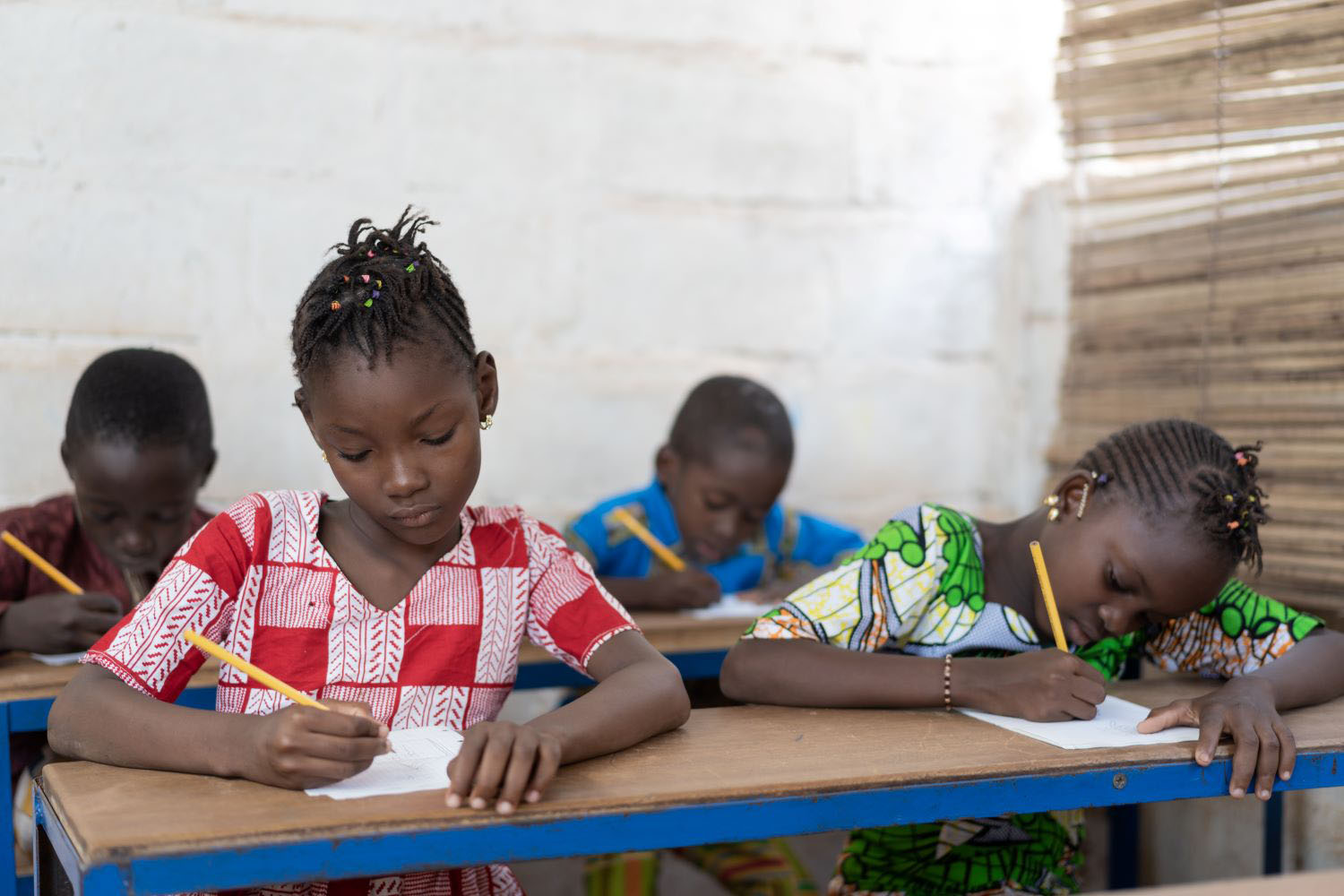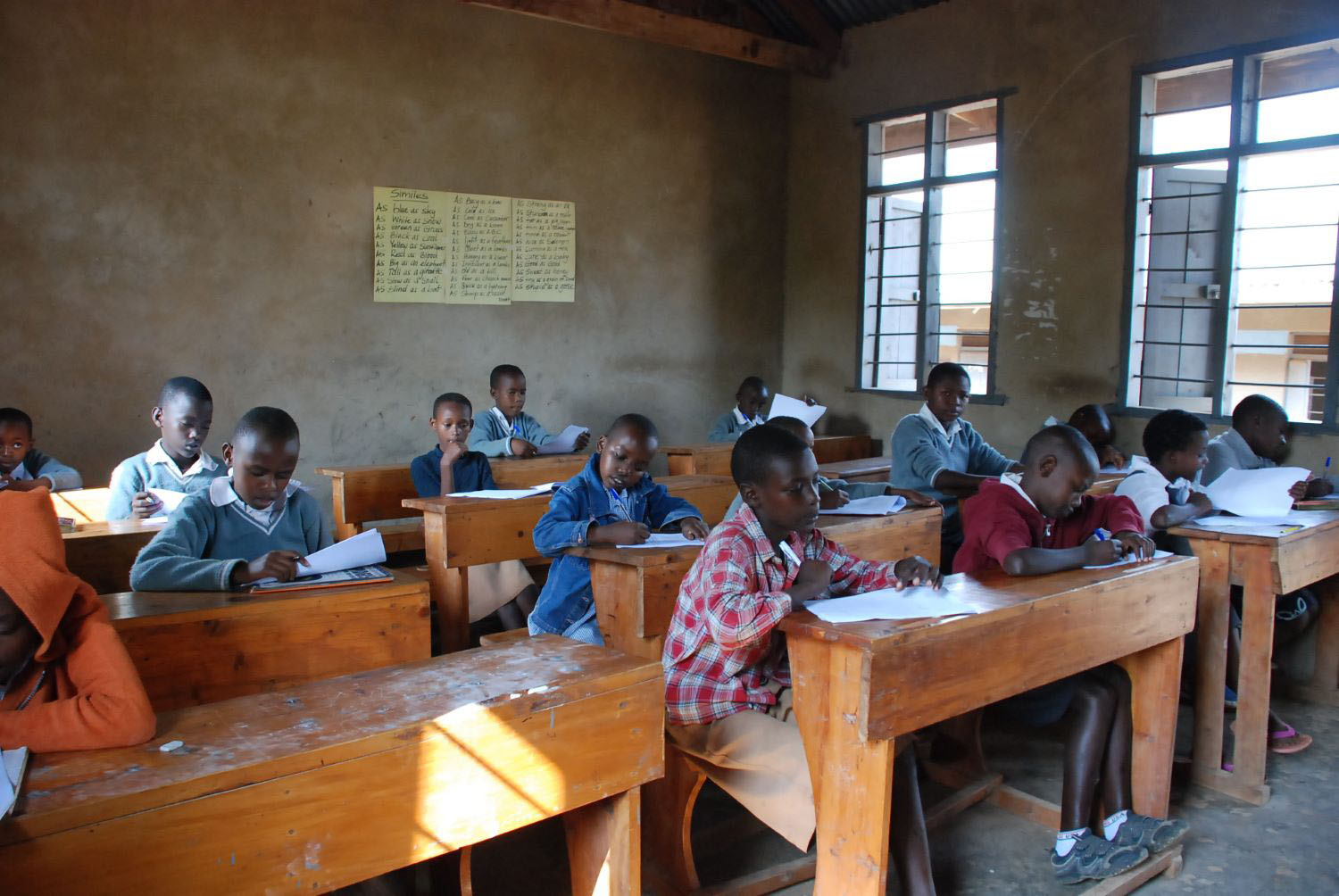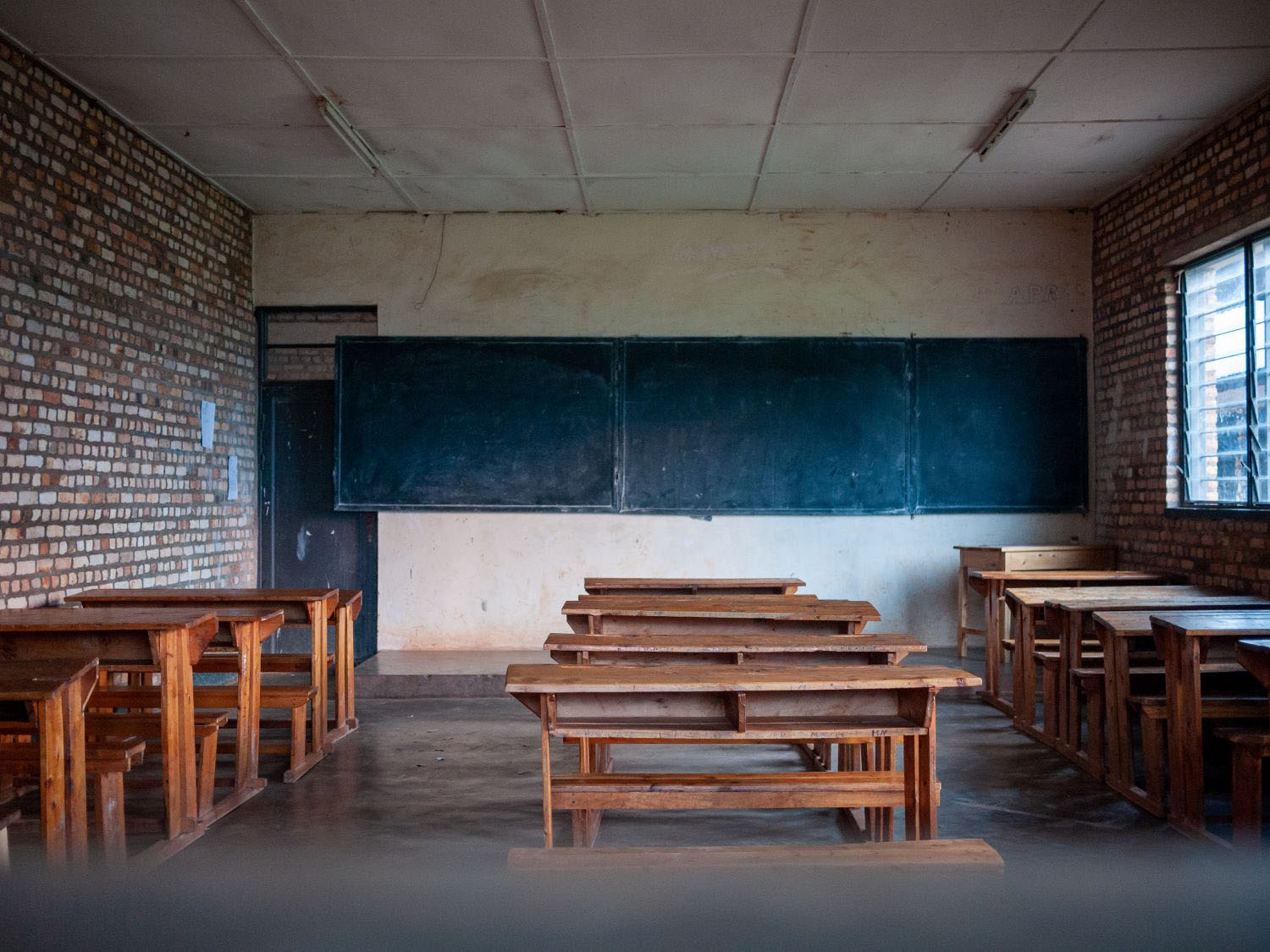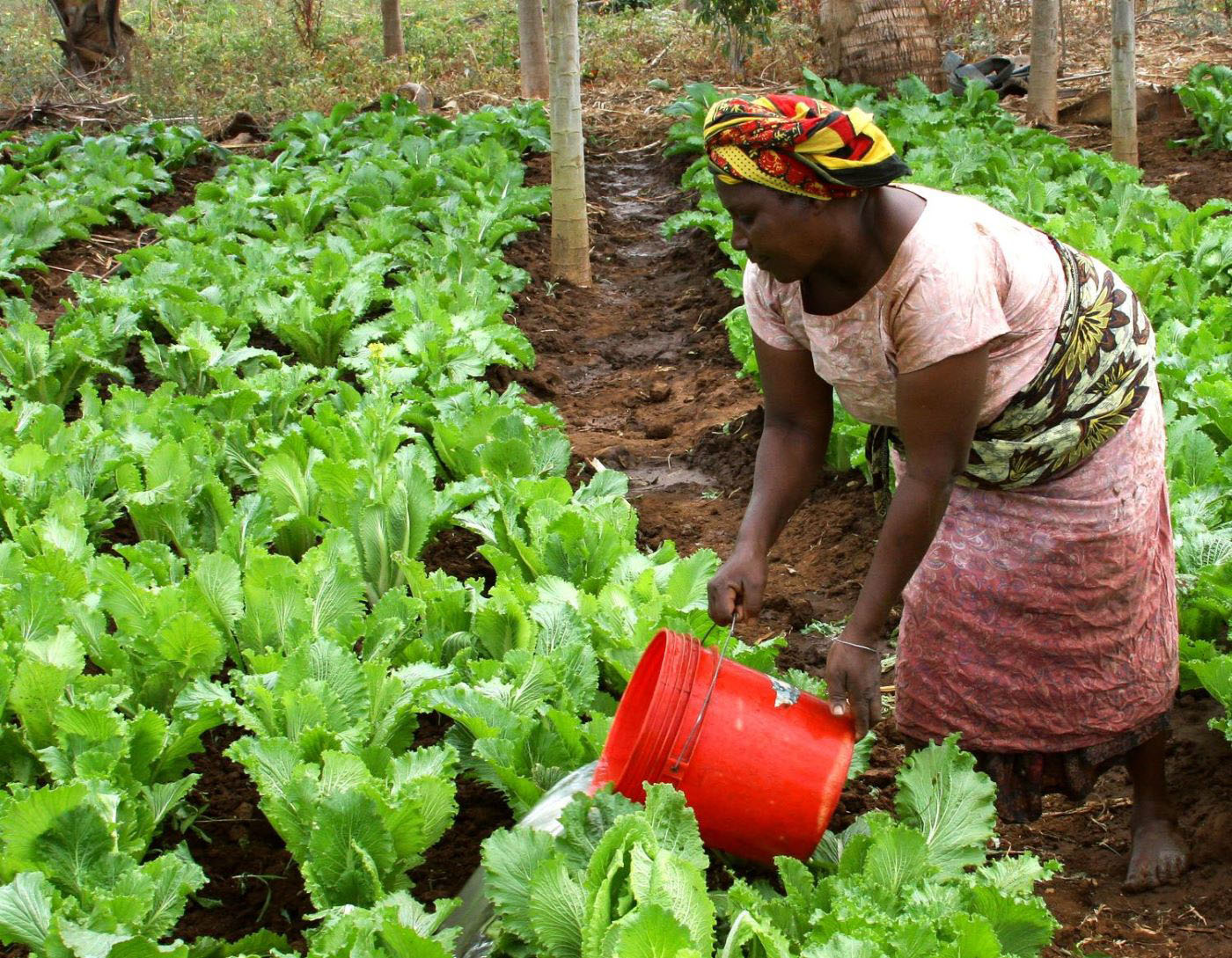This week was the Centre for the Study of African Economies’ annual conference. It included more than a hundred papers on topics ranging from bureaucracy to trade and from political economy to deforestation.
It’s a great collection of novel work from researchers around the world, including many who are based in African countries. Much (but far from all) of the continent was included in the research presented (Figure 1A). Ethiopia was the African country with the most studies (13), Uganda had 9, and Kenya had 7. There are also many studies from non-African countries (especially South Asia, with 14 studies from India, more than any single African country) but with relevance to policy decisions on the continent. If you missed the conference, you can read the papers!
We went through the 43 papers we identified that engaged with the topics we research ourselves: education, health, early childhood development, cash transfers, and gender. These papers represent a smaller share of the continent (Figure 1B).
Figure 1A. Countries in at least one study in the CSAE conference
Figure 1B. Countries in at least one study among human development studies
Notes: This figure does not include studies that cover more than three countries. For example, there are several studies that use data from dozens of countries but do not focus on specific countries. They are included in the summaries below but not in the map. Non-African countries are also not included in the figure.
We provide a micro-summary of each study below. Before you dive in, here are a few notes:
-
Several of the papers belong in multiple categories: for example, does more education boost health? (In Ghana, according to Aboyadana’s analysis, it does.) Is that an education paper or a health paper? We’ve repeated studies in multiple sections below so if you’re focused on health, you’ll find all the health-related papers in the health section. The second or third time a paper appears, we put an asterisk after the summary so you can skip it if you’re reading straight through.
-
Our brief summaries can’t capture either the richness of results from many papers or all the caveats that accompany a highlighted result. We’ve linked to all the papers: if you find something interesting, go check out the paper.
-
Hashtags give information on the research methods used: #RCT = randomized controlled trial, #RD = regression discontinuity, #DID = difference-in-differences, #FE = fixed effects, and #PSM = propensity score matching.
Without further ado, let’s see what the latest research teaches us about human development in Africa and beyond!
Education
-
Free primary education in Ghana “led to a decrease in the probability of smoking, fertility behaviour,” and sexually transmitted infections, and an increase in “healthy eating, antenatal visits and the risk of obesity.” (Aboyadana) #RD
-
A survey of 900+ senior government officials in 35 low- and middle-income countries finds that policymakers largely prioritize vocational education over foundational skills (like literacy), but they also “dramatically overestimate foundational learning levels in their country.” (Crawfurd et al.; summary blog post) #SurveyExperiment
-
Does free primary education hurt learning outcomes? In Lesotho, free primary education improved academic performance at the university level by “at least 4 percent.” (Moshoeshoe) #DID
-
Conditional cash transfers to “girls attending secondary schools in Punjab, Pakistan” led to a higher likelihood of completing secondary school (1.3 percent), a lower likelihood of early marriage (3.5percent), and in the next generation, less stunting (1.2 percent) and fewer underweight children (1.7 percent). (Musaddiq and Said) #FE #DID
-
Providing SMS messages with practice problems and phone calls to parents boosted learning among children in Botswana while schools were closed for COVID-19. (Angrist, Bergman, and Matsheng) #RCT
-
Providing better toilet facilities and menstrual health education in Bangladesh reduced both girls’ absenteeism and their dropout rates, both by 5 percentage points. Coupling it with a parental education program further reduced absenteeism (but not dropout). (Sol, Nillesen, and Smeets) #RCT
-
Giving a certificate to head teachers in Pakistan who did well in their training didn’t boost their performance. But putting them on a list that qualifies them for future career opportunities did. (Mansoor) #RCT
-
A nationwide program in Peru that provided training sessions and monitoring tools to school heads improved reporting of incidence of school violence by 37 percentage points. Students also switched schools less. (Smarrelli) #RD
-
School reopenings in Kenya boosted the hours parents worked in a week by 21 percent. The effect is there for both women and men. (Biscaye, Egger, and Pape) #DID
-
Providing sexual harassment awareness training for undergraduate women in Delhi, India, made them “less likely to accept job offers to work in male majority teams.” (Sharma) #RCT
-
Showing “a video of successful relatable female role models” to female undergraduate students at public colleges in Pakistan increased their likelihood of working by 4 to 6 percentage points 18 months after graduating. (Ahmed et al.) #RCT
Health
-
“Can governments leverage existing service-delivery platforms to scale early childhood development programs?” Integrating a home visiting intervention into Bangladesh’s national nutrition program led to improvement in both children’s cognitive development and their nutrition. (Bos et al.) #RCT
-
In the face of high COVID-19 vaccine hesitancy in Papua New Guinea, “a message that emphasized the relative safety of the vaccine by highlighting that severe side effects are rare, while also emphasizing the dangers of COVID-19, increased intention to get vaccinated by around 50 percent.” (Hoy, Wood, and Moscoe) #SurveyExperiment
-
In rural Bangladesh, providing information by phone and an unconditional cash transfer reduced “the number of reported deaths by about 50 percent” in participating villages. (Chowdhury et al.) #RCT
-
In urban Pakistan, expanding the scope of services covered by health insurance and offering telehealth services (virtual doctor’s appointments) was associated with better self-reported health and more (and earlier) doctor consultations. (Ahmad, Hussain, and Nazif) #Matching
-
Providing “pregnant and immediate postpartum women with improved access to family planning through counseling, free transport to a clinic, and financial reimbursement for family planning services over a two-year period” reduced stunting among children in Malawi. (Maggio, Kara, and Canning) #RCT
-
When food aid in a large refugee camp in Uganda was cut by 50 percent, refugees experienced "a 56 percent reduction in weekly caloric intake.” (Vintar and Sterck) #RD
-
In India, women call the shots on toilet finance: "Households where the woman perceives the benefit of the toilet to be similar or higher than the man are around four times more likely to take" a loan to build a toilet. (Augsburg et al.) #RCT
-
In Côte d'Ivoire, there is no inequality between foster children and biological children ages 6-10 in terms of how much they consume. For older kids, "parents are less likely to forgo some of their consumption of adult goods for foster boys." (Olié) #FE
-
In Nigeria, “burning off the gas coming out of oil wells” (called “gas flaring”) is associated with more respiratory diseases and fevers among kids under five years old. (Alimi and Gibson) #FE
-
Drawing on data from 36 African countries, “being born in a village located downstream an opened mine increases the mortality rates under 2 years old by 7.9 percentage points.” (Gittard and Hu) #DID
-
Drawing on data from 25 African countries, “a 10 percentage point increase in mobile network coverage is associated with a 0.45 percentage point reduction in infant mortality.” (Mensah, Tafere, and Abay) #IV
-
In Ethiopia, health workers diverge in their motivations: some are motivated principally by salary and others are motivated by seeing good health outcomes. Understanding this can help health systems to structure jobs to keep workers motivated. (Arora et al.) #SurveyExperiment
-
Are health workers more motivated by the nature of the work they’re doing or because they value their organization’s mission? Among medical students in Burkina Faso, being engaged in interesting tasks drives motivation much more than a charitable mission. (Banuri, Keefer, and de Walque) #LabInField
-
Free primary education in Ghana “led to a decrease in the probability of smoking, fertility behaviour,” and sexually transmitted infections, and an increase in “healthy eating, antenatal visits and the risk of obesity.” (Aboyadana) #RD*
-
Providing better toilet facilities and menstrual health education in Bangladesh reduced both girls’ absenteeism and their dropout rates, both by 5 percentage points. Coupling it with a parental education program further reduced absenteeism (but not dropout). (Sol, Nillesen, and Smeets) #RCT*
Early Childhood Development
-
In Burkina Faso, a quarter of women offered use of community childcare centers enrolled their children, showing high unmet demand for childcare. Women’s employment, financial outcomes, and self-reported well-being all improved. So did child development. (Ajayi, Dao, and Koussoubé) #RCT
-
“Can governments leverage existing service-delivery platforms to scale early childhood development programs?” Integrating a home visiting intervention into Bangladesh’s national nutrition program led to improvement in both children’s cognitive development and their nutrition. (Bos et al.) #RCT*
Cash Transfers
-
Providing cash grants and financial training to 1,000 poor women in Tunisia increased income-generating activities by 3.4 percentage points. Inviting the husbands in the training session actually reduced the effect. (Gazeud et al.) #RCT
-
Providing a cash grant and psychosocial support to women in Niger produced large impacts on economic welfare and well-being six months later. Providing only the psychosocial support (life skills training and a community discussion about values) initially produced smaller effects than providing only the cash grant, but effects were similarly large by 18 months. (Bossuroy et al.) #RCT
-
It's common to try and target social programs to people who are most “deprived” (e.g., they have the least wealth or the least food). But do the poorest of the poor gain the most from the programs? In a cash transfer program in Kenya, they often don’t, so whether or not targeting the poorest makes sense will depend on whether the program focus is principally on having the biggest impact or on redistributing to the poorest. (Haushofer et al.) #MachineLearning
-
How do business grants perform relative to unconditional cash transfers in Somalia? It's like the story of Goldilocks: the effects of small grants didn't persist, big grants weren't cost effective, but medium-sized grants were just right. (Abdullahi et al.) #RCT
-
An unconditional cash transfer program to farmers in Malawi led to 75 percent higher harvests after one year. The additional cash allowed them to work more on their own farms (by 27 percent) instead of providing labor to other farms for cash. (Sirma) #RCT
-
Providing grants to households with children in Zambia increased the likelihood that a household would have a non-farm business (by 17 percent) and increased the proportion of women with savings by 25 percent. (Viberti et al.) #RCT
-
In a lab-in-the-field experiment in Nigeria, most women deferred "decision-making to their spouse." If women were receiving cash transfers, they still deferred, unless they knew their husbands wouldn't find out about it. (Bakhtiar et al.) #LabInField
-
COVID-19 increased the poverty in Zambia from 56 to 58 percent over the course of a year, driven by the pandemic's impact on urban areas. Simulations show a social cash transfer program could reduce poverty by up to 6 percentage points. (Paul et al.) #Simulation
-
When food aid in a large refugee camp in Uganda was cut by 50 percent, refugees experienced "a 56 percent reduction in weekly caloric intake.” (Vintar and Sterck) #RD*
-
In rural Bangladesh, providing information by phone and an unconditional cash transfer reduced “the number of reported deaths by about 50 percent” in participating villages. (Chowdhury et al.) #RCT*
Gender
-
Providing “pregnant and immediate postpartum women with improved access to family planning through counseling, free transport to a clinic, and financial reimbursement for family planning services over a two-year period” reduced stunting among children in Malawi. (Maggio, Kara, and Canning) #RCT
-
Promoting women garment workers to supervisory positions in Bangladesh increased remittances (often to other family members taking care of their children) from 6 percent of household income to 9.5 percent. (Uckat) #RD #Matching
-
The economic shock caused by extensive flooding in Bangladesh in 2017 "led women to engage more in market activities, to decrease their time spent in domestic work, and to be more empowered." Men, on the other hand, "decreased their time spent at work and they engaged more in housework substituting for women’s domestic work." (Vitellozi) #DID
-
Based on data from 30 countries across Africa, women who have their first child born before they get married tend to put off marriage longer if the child is a girl. But women who have their first child after marriage are more likely to divorce if the child is a girl. (Genicot and Hernandez-de-Benito) #IV
-
Providing grants to households with children in Zambia increased the likelihood that a household would have a non-farm business (by 17 percent) and increased the proportion of women with savings by 25 percent. (Viberti et al.) #RCT
-
"Female-led firms were, on average, 4 percentage points more likely to close their business than male-led firms in 2020" based on a survey across 50 middle- and high-income countries, partly driven by school closures and increased domestic work burden on women. (Goldstein et al.) #Matching
-
Women entrepreneurs in urban Bangladesh who attended counseling on goal setting, time management, and problem-solving strategies are "11 percentage points less likely to be depressed and 23 percent less likely to lose an hour of work to solve problems at home." (Lopez-Pena) #RCT
-
Across matchmaking websites in India, "women who signal wanting to work after marriage receive up to 22 percent less interest from men than those of women who have never worked." (Dhar) #RCT
-
Women’s employment has been disproportionately affected by the COVID crisis. A commonly proposed reason for this is that women had to take on even more work of caring for people at home during the crisis, but among young women in Peru and Vietnam, that only explains 11 percent of the increased employment gap. In India, it explains even less. (Scott et al.) #FE
-
Street safety in urban Indonesia and India is associated with more women working: women in very safe neighborhoods are 8.5 percentage points more likely to be in the labor force relative to women in unsafe neighborhoods. (Cahill) #PSM
-
During COVID, companies in Ethiopia lost a lot of business and so had to lay off lots of workers. But even after companies recovered, many of those laid off—mostly women and migrants from rural areas—remained unemployed. (Hardy et al.) #DID
-
Across Ethiopia, Malawi, and Tanzania, women are less likely to have full rights to sell, rent, or bequeath their land and more likely to need permission or consent from someone else to exercise those rights than men. (Hasanbasri et al.) #MachineLearning
-
Providing better toilet facilities and menstrual health education in Bangladesh reduced both girls’ absenteeism and their dropout rates, both by 5 percentage points. Coupling it with a parental education program further reduced absenteeism (but not dropout). (Sol, Nillesen, and Smeets) #RCT*
-
Providing cash grants and financial training to 1,000 poor women in Tunisia increased income-generating activities by 3.4 percentage points. Inviting the husbands in the training session actually reduced the effect. (Gazeud et al.) #RCT*
-
Providing a cash grant and psychosocial support to women in Niger produced large impacts on economic welfare and well-being six months later. Providing only the psychosocial support (life skills training and a community discussion about values) initially produced smaller effects than providing only the cash grant, but effects were similarly large by 18 months. (Bossuroy et al.) #RCT*
-
In India, women call the shots on toilet finance: "Households where the woman perceives the benefit of the toilet to be similar or higher than the man are around four times more likely to take" a loan to build a toilet. (Augsburg et al.) #RCT*
-
In Burkina Faso, a quarter of women offered use of community childcare centers enrolled their children, showing high unmet demand for childcare. Women’s employment, financial outcomes, and self-reported well-being all improved. So did child development. (Ajayi, Dao, and Koussoubé) #RCT*
-
In a lab-in-the-field experiment in Nigeria, most women deferred "decision-making to their spouse." If women were receiving cash transfers, they still deferred, unless they knew their husbands wouldn't find out about it. (Bakhtiar et al.) #LabInField*
-
Providing sexual harassment awareness training for undergraduate women in Delhi, India, made them “less likely to accept job offers to work in male majority teams.” (Sharma) #RCT*
-
Showing “a video of successful relatable female role models” to female undergraduate students at public colleges in Pakistan increased their likelihood of working by 4 to 6 percentage points 18 months after graduating. (Ahmed et al.) #RCT*
Disclaimer
CGD blog posts reflect the views of the authors, drawing on prior research and experience in their areas of expertise. CGD is a nonpartisan, independent organization and does not take institutional positions.





